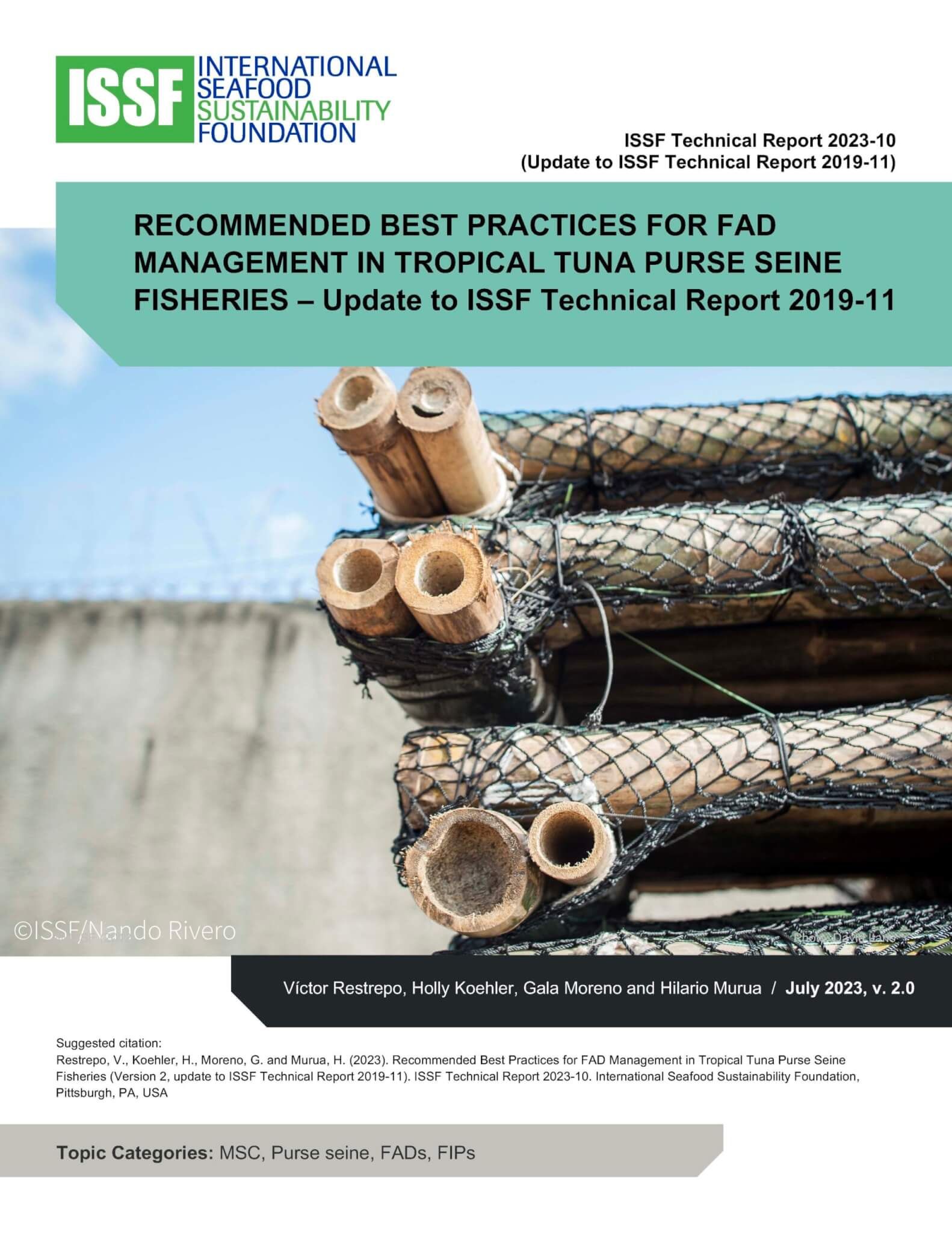Document: ISSF 2023-10: Recommended Best Practices for FAD Management in Tropical Tuna Purse Seine Fisheries (Update to ISSF 2019-11)*
This technical report replaces ISSF 2019-11, and includes more information on best practices for aFADs.
Many purse seiners use Fish Aggregating Devices (FADs) in tropical tuna, including industrial fisheries operating with drifting FADs (dFADs) and semi-industrial/artisanal operating with anchored FADs (aFADs). Management of the FAD component of these fisheries is an important focus of Regional Fishery Management Organizations and stakeholders such as ISSF.
ISSF and other NGOs have put together lists of the elements that they consider to be most important for effective management of FADs. This paper expands upon the six elements of management that ISSF considers to be of utmost importance for a proper management of dFAD and aFAD fisheries:
- Complying with flag state and RFMO reporting requirements by set type
- Voluntarily reporting additional FAD buoy data for use by RFMO science bodies
- Supporting science-based FAD limits
- Using non-entangling FADs to reduce ghost fishing
- Mitigating other environmental impacts due to FAD loss including through the use of biodegradable FADs and FAD recovery policies
- Implementing further mitigation efforts for silky sharks
We provide practical examples that fleets could adopt as their FAD management policies.
Downloads: 734 | Views: 53
Restrepo, V., Koehler, H., Moreno, G. and Murua, H. (2023). Recommended Best Practices for FAD Management in Tropical Tuna Purse Seine Fisheries (Version 2, update to ISSF Technical Report 2019-11). ISSF Technical Report 2023-10. International Seafood Sustainability Foundation, Pittsburgh, PA, USA
